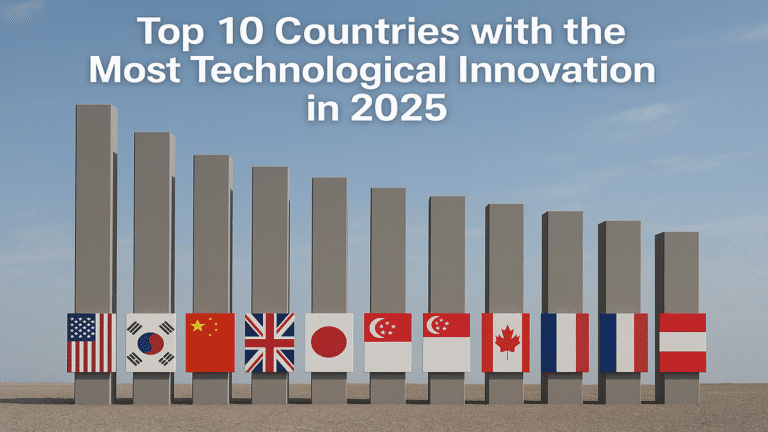Technological Innovation Landscape in 2025
In 2025, the global landscape of technological innovation is rapidly evolving. Driven by advancements in artificial intelligence, biotechnology, quantum computing, and sustainable energy, nations are not only striving to develop cutting-edge technologies but are also focused on marketing and scaling these innovations for a broad global impact.
While traditional leaders like the United States, Japan, and Germany continue to shape the innovation narrative, emerging tech powers such as China, India, and South Korea are quickly closing the gap. Their rise is supported by strong governmental policies, educational reforms, and substantial venture capital funding.
Top 10 Countries Leading in Tech Innovation
This article delves into the top 10 countries spearheading technological innovation in 2025, examining their research ecosystems, intellectual property frameworks, startup activity, and influence in shaping the Fourth Industrial Revolution.
1. United States: The Global Powerhouse of Innovation
The United States remains a premier hub for technological innovation in 2025, thanks to its combination of world-class universities, a vibrant startup culture, and massive investments in R&D. American companies excel in fields like semiconductors, AI, and clean energy, with industry giants such as Apple, Google, and SpaceX setting global trends. Support from government agencies facilitates advancements in areas like quantum computing and defense technology.
2. China: Strategic Power in Innovation
In 2025, China stands as a major force in global innovation through state-driven technological development and massive industrial subsidies. The nation excels in 5G deployment, AI, and electric vehicle production, making significant strides in semiconductor self-sufficiency. Initiatives like “Made in China 2025” continue to bolster its goal of achieving technological leadership.
3. South Korea: High-Tech and R&D Leadership
South Korea is distinguished by its high-tech infrastructure and leading R&D investments relative to GDP. With companies like Samsung and LG at the forefront of consumer electronics and automated mobility solutions, the country’s national strategy propels advancements in smart cities and green technologies.
4. Germany: Leader in Industrial Innovation
Germany remains Europe’s most innovative economy, excelling in industrial automation and clean technology. The nation supports Industry 4.0 initiatives, combining manufacturing strength with digital transformation. With a robust research ecosystem, Germany also prioritizes advancements in cybersecurity and robotics.
5. Japan: Excellence in Robotics and AI Integration
Japan stands as a global leader in robotics and nanotechnology. With a focus on solving societal issues through technology—such as support systems for an aging population—the country continues to innovate in areas like health AI and clean transportation, leveraging the expertise of major corporations.
6. Israel: The Start-Up Nation
With a concentration on cybersecurity and fintech, Israel boasts one of the highest R&D spending rates globally. Its innovation model thrives on the transfer of military technology to civilian applications, creating a dynamic startup ecosystem in cities like Tel Aviv.
Conclusion: Future of Global Innovation
Countries like the United Kingdom, Singapore, India, and Sweden are also making strides in innovation, focusing on areas such as AI governance, digital infrastructure, and sustainable solutions. As these nations continue to evolve, the landscape of technological innovation in 2025 promises to not only transform economies but also impact global policy and society at large.

